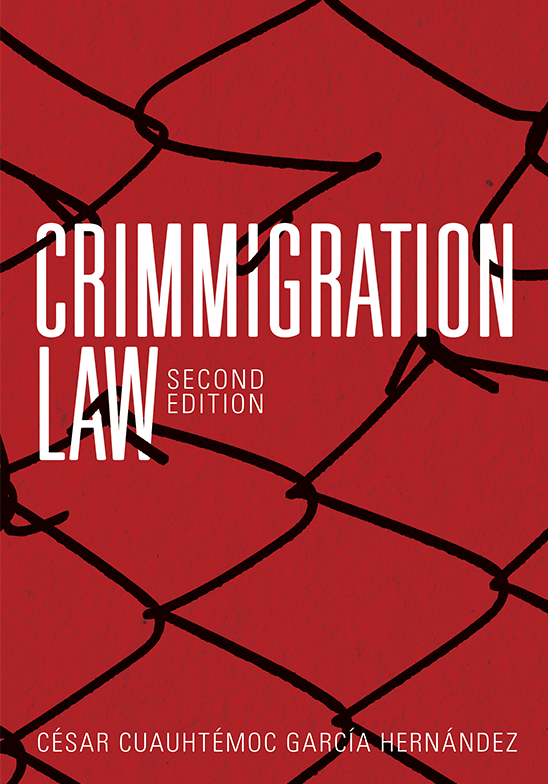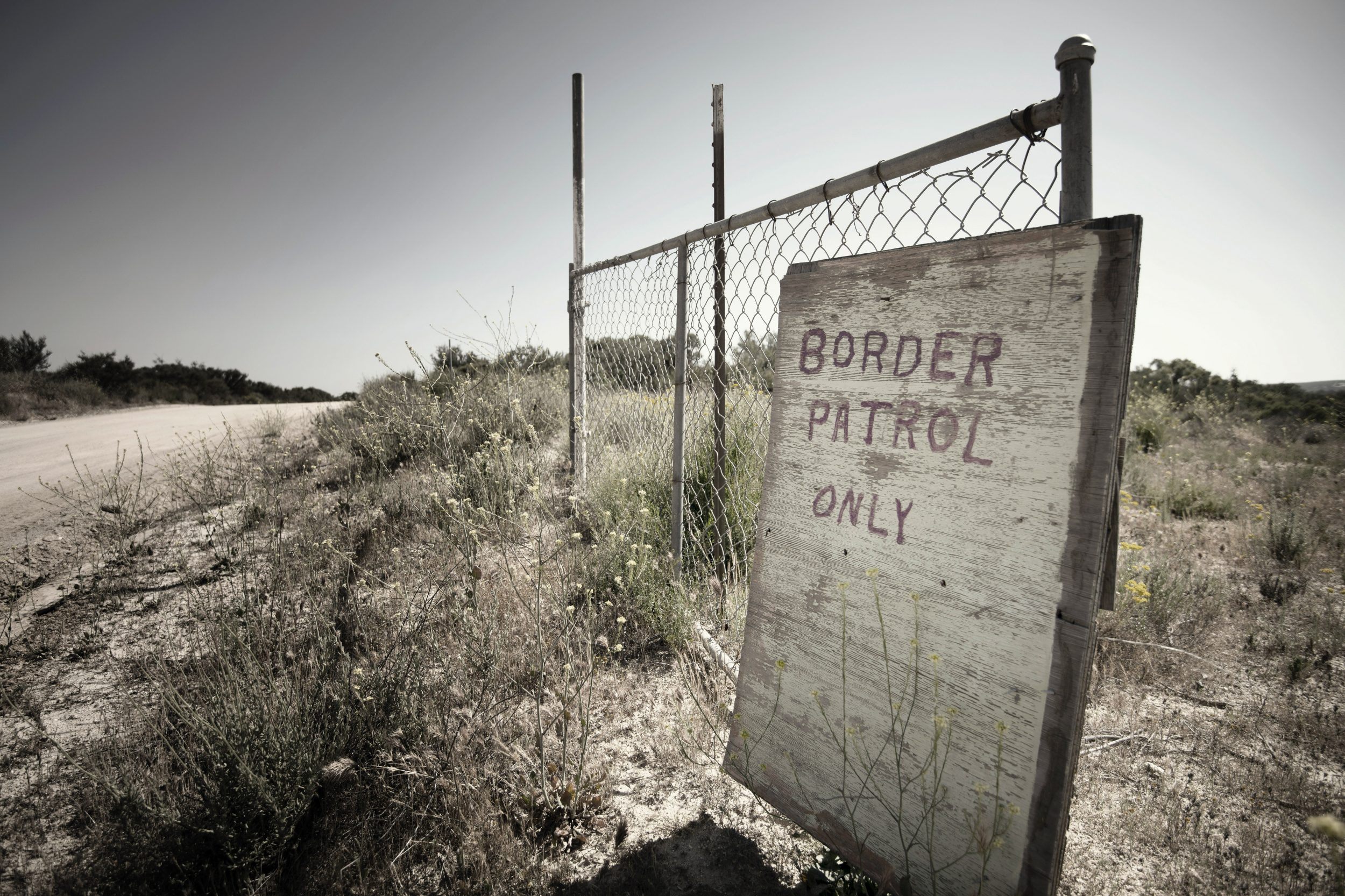Cross-border movement of people and goods long precedes the existence of geopolitical boundaries separating nations. As the United States’ international boundaries concretized into their modern forms, cross-border traffic continued largely unabated. Binational communities prospered and struggled with the times. The number of people migrating fluctuated as wars and natural disasters peaked and waned. Through these cycles, however, the border largely failed to operate as a barrier.
Neither the state governments prior to the late 1800s nor the federal government after that devoted many resources to regulating who or what crossed the border. Indeed, Congress did not establish a dedicated border law enforcement agency, the Border Patrol, until 1924. Its initial round of hires numbered all of 104 agents. Many years later the number of agents had not grown too much. The agency counted on roughly 300 agents through 1940, and it did not employ more than 2,000 agents until 1979. The Border Patrol’s fortunes suddenly changed in the closing decades of the twentieth century. By 1992 it employed more than 4,000 agents. Within a few years the number began to rise dramatically: almost 6,000 agents in 1996; 8,000 in 1998; 10,000 in 2002; and 20,000 in 2009. Ten years later, the number remained roughly unchanged.

What changed in the closing decades of the twentieth century when Border Patrol staffing began its growth spurt? Two things. First, Congress amended the Immigration and Nationality Act in 1965 to abolish the century-old national origins quotas that had limited the number of migrants who could be granted permission to enter the United States based on their racial classification. President Harry Truman had vetoed the racial quota regime in 1952, calling it “a slur on the patriotism . . . of our citizenry,” but Congress overrode him. Thirteen years later Congress finally got around to repealing the quota system and replacing it with the family and employment-based selection system that is largely still in place. People are allowed to come to the United States based on their family relationships and skills.
Having eliminated the explicitly racist quota system, the 1965 act was hailed as promoting a liberal vision of formal equality. Everyone was thought to have an equal opportunity to come to the United States. The catch was that the 1965 act and its 1976 amendments capped the number of people who could come from any given country. This would not necessarily have become problematic had the chosen cap — excluding parents, spouses, and unmarried minor children of United States citizens, 20,000 migrants per year per country — not been well below the number of people already coming from countries with longstanding relations with the United States, especially Mexico. More than 200,000 Mexicans were regularly coming to the United States in the 1960s, roughly ten times the number permitted under the new immigration law regime.
Rather than stop Mexicans from coming to the United States, the cap merely changed the legality of their longstanding activity. In other words, the cap, as the historian Mae Ngai wrote, simply “recast Mexican migration as ‘illegal.’” Available statistics bear out this claim. “Net unauthorized migration — that is, the difference between the number of unauthorized individuals who entered the country and those who left — jumped from zero before the 1965 Act was enacted to approximately 300,000 per year by the close of the 1980s.” Now viewed as lawbreakers — as people who had simply chosen to skirt the legal options for coming to the United States — unauthorized migrants came to be seen as moral scofflaws. Immigration authorities lost no time targeting these offenders with strong-armed enforcement. In 1976, the federal government deported 781,000 Mexicans plus another 100,000 people from the rest of the world.
Tough immigration law enforcement did not dramatically curtail immigration to the United States. In fact, three large groups of migrants flocked to the United States during the late 1970s and 1980s. Roughly 125,000 Cubans reached the United States in 1979 and 1980 after the Cuban government announced that it would not stop anyone from leaving through the island’s port in Mariel. Around this time another 15,000 or so Haitians arrived, mostly on rickety vessels that miraculously survived the journey across the Caribbean. Neither of these flows compared in size to the hundreds of thousands of Central Americans who made their way across Mexico to reach the United States by land seeking refuge from the civil wars ravaging that region. Though Cubans were treated measurably more favorably than Haitian or Central American migrants, all presented political problems and administrative headaches to government officials who had to decide how to respond to so many people literally walking or rowing their way into the United States without the government’s knowledge or permission. As President Ronald Reagan claimed in 1984, “our borders are out of control.”
The second development leading to an expanded emphasis on border law enforcement was the onset of the war on drugs. Candidates Richard Nixon and George Wallace had harped about rampant crime during their 1968 presidential campaigns, but it would take another decade before crime control became a salient feature of federal policymaking. Ronald Reagan managed to harness the fear that soon began to revolve around discussions of crime-plagued communities into a key component of his successful presidential run and in 1982 he officially announced what has come to be known as the “war on drugs.” Reagan’s presidency would become synonymous with a litany of anti-drug initiatives.
At the same time, “drugs that had previously been routed through the Caribbean began making their way into the United States across the Mexican border.” Almost before it began, the drug war had a new front: the southwest border. Policymakers and political pundits began talking of unauthorized migrants and drug traffickers in the same breath. The language of war that was gaining popularity in the drug context was repurposed to discuss immigration as unauthorized migrants were said to be invading the country.
Almost before it began, the drug war had a new front: the southwest border. Policymakers and political pundits began talking of unauthorized migrants and drug traffickers in the same breath. The language of war that was gaining popularity in the drug context was repurposed to discuss immigration as unauthorized migrants were said to be invading the country.
And because all of this activity was happening along the southwest, the border with Mexico came to be seen as a weak link in the nation’s defense. Border security, the Reagan administration concluded, was a national security concern. His successor, George H.W. Bush, claimed that the border represented “the front lines of the war on drugs,” a comment he made while signing the Immigration Act of 1990. This act and many other bills enacted from the middle of the 1980s through the present day have intertwined efforts to curtail drug activity with efforts to toughen immigration law. Immigration officials increasingly took on a more active role in drug enforcement, including the 1991 decision designating the Border Patrol as the federal agency with primary responsibility for drug interdiction between ports-of-entry. Along with more responsibility came more funding. Meanwhile, criminal justice agencies were tasked with greater involvement in immigration law enforcement.
This ramp-up in authority and responsibility led to a heightened law enforcement presence along the southwest border. In 1989, Lloyd Bentsen, at the time a United States senator representing Texas, complained to the attorney general that “[immigration] policy will turn South Texas into a massive detention camp.” Such an intense law enforcement presence — perhaps inevitably — eventually led to claims of government overreach. For example, in 2006, political scientist and border resident Tony Payan claimed, “the war on drugs, the war on immigration, and the war for Homeland Security, are now a daily fixture of the lives of the border people.”
The more things change, the more they stay the same. Our nation may be turning the page from the age of Donald Trump, who more than any other president glorified Border Patrol’s paramilitary presence at the border. But the Biden administration hasn’t really changed course all that much. The border state is here to stay. Less a cause than an illustration of the carceral bent U.S. law took beginning in the 1980s, immigration law enforcement carries the hallmarks of the same policing fetish that affects communities of color throughout the United States. Along the border, where communities of color dominate, the threats of cross-border traffic by people and goods is depicted as a menace against which strong-armed policing tactics are justifiably deployed — and which the courts allow.
Four decades into this policing strategy, cross-border traffic continues, and so, too, does the security-first strategy. Presidential rhetoric changes and, at the margins, policies do, too, from year to year. But from Reagan to Biden, presidential administrations provide stable political support and generous funding to deploy tens of thousands of law enforcement officers, equip them handsomely with advanced weaponry, and ensure that there are prison beds available for migrants who enter their clutch. Republicans hail the consequences, while Democrats lament them, but the policing-to-deportation pipeline continues.
Excerpted from the book Crimmigration Law (Chapter 8). ©2021 American Bar Association. All rights reserved. No part of this publication may be reproduced, stored in a retrieval system, or transmitted in any form or by any means, electronic, mechanical, photocopying, recording, or otherwise, without the prior written permission of the publisher.
Image: Unsplash

